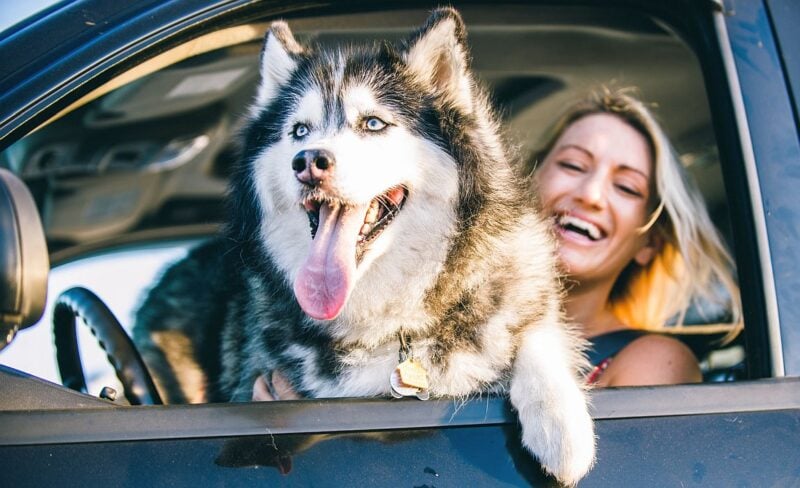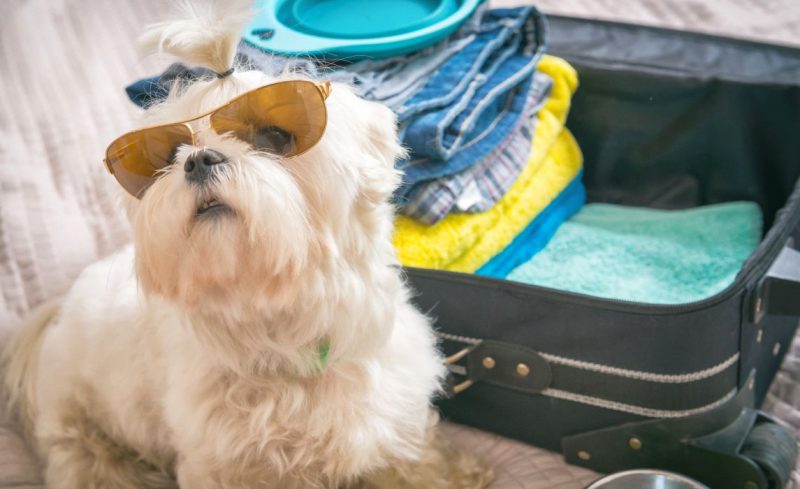Summer is here, which means many sea-faring folks will begin taking their dogs out on the open ocean!
Before you set off, make sure to look over this dog boating safety tips to keep your canine safe and sound at sea.
[mashshare]
Love this infographic? Feel free to post it on your own blog – we just ask you give us credit and link back to us!
Your dog will likely enjoy being out on the open ocean as much as you will, but just like with human passengers, safety measures must be taken!
1. Create an Emergency Plan
Make sure you consider an emergency plan of what you’ll do in the event that your dog falls overboard.
Choose who will navigate the boat and who will keep visuals on the floating dogs. Dogs don’t have the ability to wave to signal where they are, and their small floating heads can easily get lost among the waves. This is why it’s essential to assign specific people to the task of keeping an eye on the dog’s location if they fall over.
Once you get near the dog, cut the engine and yell for the dog to swim towards you. Do not jump in to help, as even a medium-sized panicked dog may accidentally pull you under (panicked humans do the same thing – it’s simply instinctual). Instead, call your dog over and pick them up out of the water (most dog life jackets are equipped with a top handle for this very purpose).
2. Pack a Doggy First Aid Kit
Keep a first aid kit on hand for both your human and canine crew. You’ll want to have a few different items on hand for your pooch, including:
- Flea and tick medication
- Medications your dog is currently taking (have extra in case you get stuck in an emergency)
- Antibiotic ointment for scrapes or minor cuts
- Dramamine in the event of sea sickness (make sure to talk to your vet about this)
3. Know the Rules
If you’ll be boating across state lines or internationally, make sure to read up on local legislation regarding dogs on boats, as different areas may have different rules on what’s allowed and what’s not.
4. Get a Canine Life Jacket
Most dogs tend to like water – some, like Labradors, are quite famous for their water-loving spirit. Even though dogs enjoy water, they may not all be great swimmers. Dogs aren’t exactly the best as judging their own skill level, so it’s your job as the fur parent to watch out for them.
When out at sea, all dogs should wear life jackets (yes, even those H20 obsessed Labs). Ocean water is choppy and rougher than your local pond, and even strong swimmers could get pulled under.
We’ve got a great article highlighting some of the very best dog life jackets on the market – take a look if you don’t own one yet!
Extra precaution should be taken with snub-nosed breeds, as they have a much more difficult time keeping their nose above the water level. We don’t really recommend letting these breeds swim much at all, outside of a small, contained pool. If you do allow them to swim, of course make sure they are wearing doggy PFD (Personal Flotation Devices) and be extra cautious in not letting them over exert themselves.
5. Bring Doggy Sunscreen
The majority of humans (especially the pale kind) know to lather up the sunscreen in the summer. What you may not know is that dogs need sun protection too! Dogs with very thin or very light fur are especially at risk. If you can see your dog’s pink skin under their fur, they definitely need to be protected!
Make sure to stock up on dog sun screen before you set off boating (we list some of our top picks for the best dog sunscreen here). Dog sunscreen comes in a number of different forms, from wipes to sprays, allowing you to pick an application method that will work best for your pooch.
6. Teach Your Dog “On Boat” and “Off Boat” Commands
Before getting your boating on, definitely make sure to brush up on your basic canine commands like:
- Sit
- Stay
- Leave it
- Lie Down
- Come
Listening to and following commands is extremely important for keeping your dog safe in unexpected situations. In addition to becoming a star obedience pupil, you should work on teaching your dog the “on boat” and “off boat” commands.
The on and off boat commands are key for the docking process. It’s during this time that most accidents occur, as dogs – in enormous excitement – may try to jump on or off the boat mid-docking procedure.
7. Pack Plenty of Water
Your pooch can quickly become dehydrated will hanging out on a hot, sunny boat deck during the summer. Be sure to pack plenty of clean, fresh water for both you and your dog. For extra precautions against dehydration, you may want to pack some pedialyte as well to give to your pooch in case of an emergency.
Also make sure to bring along a portable dog water bowl and/or a dog-friendly water bottle so your dog can lap up that liquid easily.
8. Give Your Dog a Potty Spot
Bathroom time can be a bit trick on a boat. Dogs that are house trained won’t relieve themselves on deck, so you’ll need to create a special space for your dog to do his business.
There are a number of different materials you can use: astroturf, plastic puppy pads, or even real grass potty pads designed for your dog’s bathroom needs. Ultimately, you’ll want to choose a material that is familiar to your dog.
Some dogs may not even relieve themselves on these pads, and may only be able to go on land. In this case, be prepared to make numerous shoreline visits so your pooch can let it all out!
Practice and Prepare
For smooth sailing, make sure to practice your boating routine with your pooch and the other humans in your family. Go through what will happen if your dog falls overboard and practice your dock boating process.
You’ll also want to familiarize your dog with the boat extensively before actually going out on the water. Give your dog several chances to spend time on the boat while safely positioned on dry land. Grab a dog-friendly boat ramp or set of steps that will allow your dog to get out of the water easily, and practice using this so your pooch can get himself onto the boat if the need arises.
Do your best to get them acquainted with their new potty practices on the vessel, and make sure they’ll be comfortable relieving themselves on that material.
Making sure your dog is comfortable with your boat and life aboard the high seas will do wonders for making your trip as smooth and stress-free as possible.
Adventure on the seas awaits – happy travels!

![Dog Boating Safety Tips: What to Know Before Setting Out to Sea [Infographic] 1 dog boating safety](https://www.k9ofmine.com/wp-content/uploads/2017/06/dog-boating-safety-infographic-2.png)







Leave a Comment